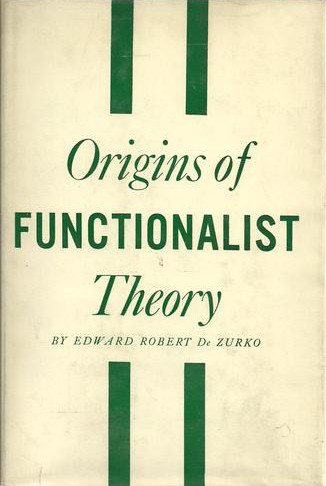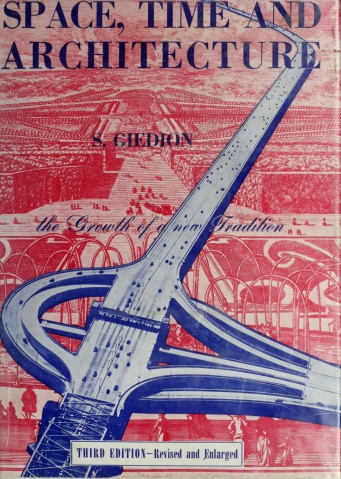Edward Robert de Zurko: Origins of Functionalist Theory (1957)
Filed under book | Tags: · aesthetics, architecture, art, beauty, functionalism, history of architecture, machine, nature, rationalism, theory

“The main purpose of this book is to study the idea of functionalism from a historical point of view. The research media are the literary sources of functionalism. Early functionalist trends in writings on architecture shall be analyzed and compared with each other and with modern interpretations of the concept. By means of this essentially semantic study I hope to demonstrate (1) the antiquity of functionalist ideas, especially the tendency to connect ideas of use with ideas of beauty; (2) the variety of guises assumed by this type of theory; and (3) the recurrent ideas which have generally characterized functionalist theory.” (from the Introduction)
Publisher Columbia University Press, 1957
265 pages
via Charles
PDF (9 MB)
Comment (0)Svetlana Boym: Architecture of the Off-Modern (2008)
Filed under book | Tags: · aesthetics, architecture, avant-garde, history of architecture, modernism, utopia

“Svetlana Boym’s Architecture of the Off-Modern is an imaginative tour through the history and afterlife of Vladimir Tatlin’s legendary but unbuilt Monument to the Third International of 1920. Generally considered to be the defining expression of architectural constructivism, the structure was envisioned as a towering symbol of modernity and a twisting, turning memorial and media center for the Bolshevik Revolution that would have dwarfed the Eiffel Tower. Boym traces the vicissitudes of Tatlin’s tower from its reception in the 1920s to its privileged recall in ‘the reservoir of unofficial utopian dreams’ of the Soviet era. Boym offers an alternative history of modernism, postulating the ‘architecture of adventure’ as a poetic model for ‘third-route’ thinking about technology, history, and aesthetic culture.”
Publisher Buell Center / FORuM Project, and Princeton Architectural Press, NY, 2008
ISBN 1616891033, 9781568987781
80 pages
Review: Brian Dillon (Frieze, 2008).
Comment (0)Sigfried Giedion: Space, Time and Architecture (1941–)
Filed under book | Tags: · architecture, city, history of architecture, urbanism

“A milestone in modern thought, Space, Time and Architecture has been reissued many times since its first publication in 1941 and translated into half a dozen languages. It is a pioneering and influential standard history giving in integrated synthesis the background and cultural context of modern architecture and urban planning, set in their manifold cultural relationships “with other human activities and the similarity of methods that are in use today in architecture, construction, painting, city planning and science.”
The book had its genesis in the Charles Eliot Norton Lectures at Harvard University in the spring of 1938, and it was recognized from the outset as a series of related essays on seminal topics in the organization of human spaces, obtaining fresh insights, not from a panoramic survey, “but by isolating and examining certain specific events intensively, penetrating and exploring them in the manner of the close-up” as Giedion outlined his method.” (Wikipedia)
First published in 1941
Third edition, enlarged, 1954
Fifth edition, revised and enlarged, 2009
Publisher Harvard University Press, Cambridge, MA
778 pages (3rd ed.)
Reviews: Ben Ray Redman (The Saturday Review, 1954), Arthur P. Molella (Technology and Culture, 2002), Sarah Bay Williams (The Art Book Review, 2013).
Publisher (5th ed.)
PDF (3rd ed., 173 MB, updated on 2017-1-2)
PDF (5th ed., 429 MB, added on 2021-7-12)

